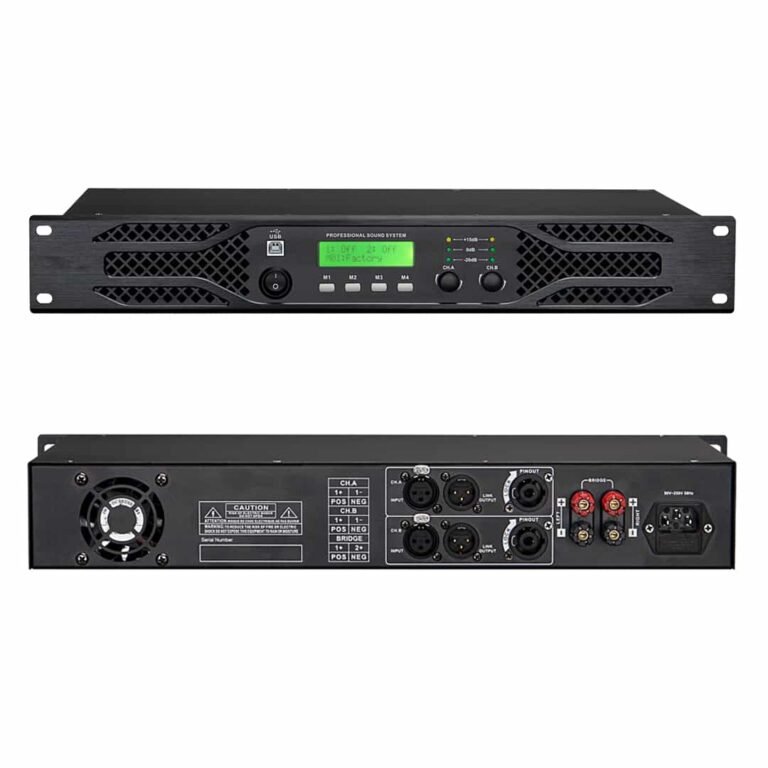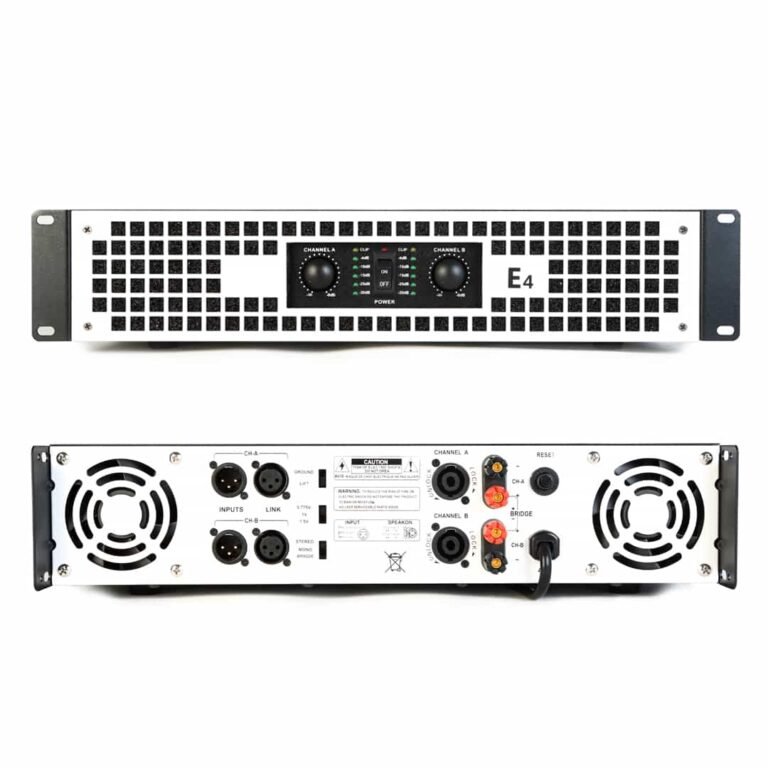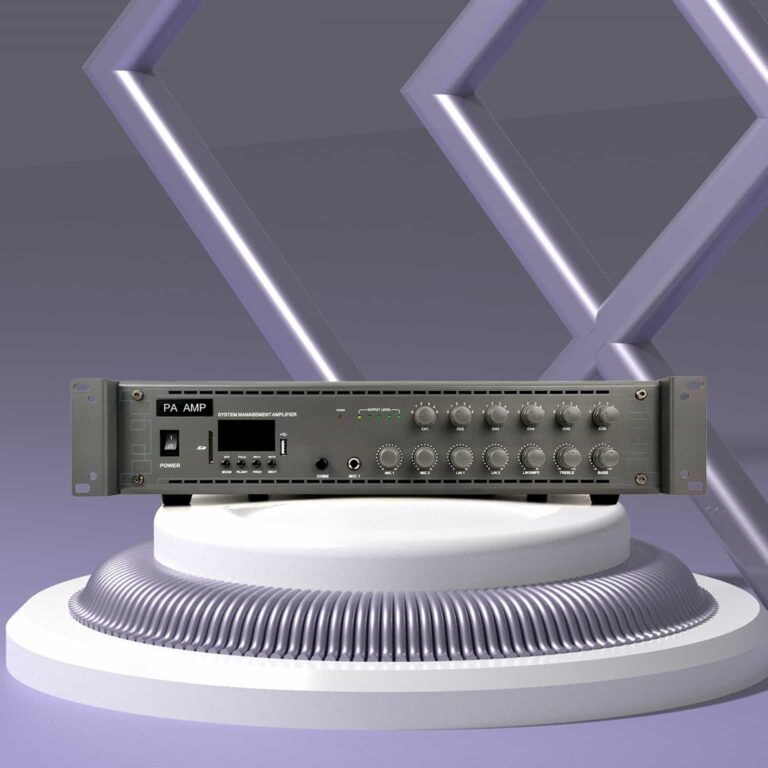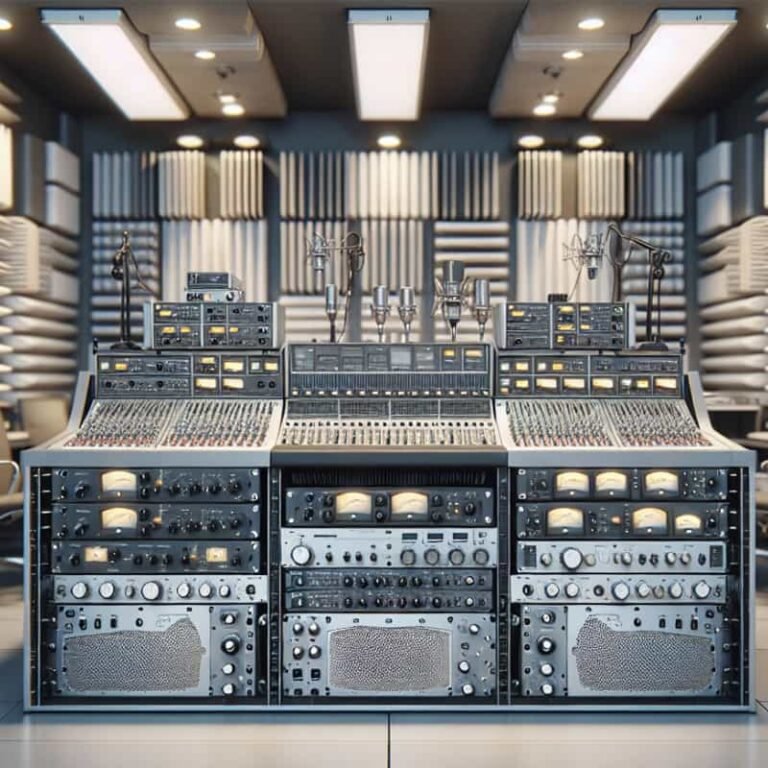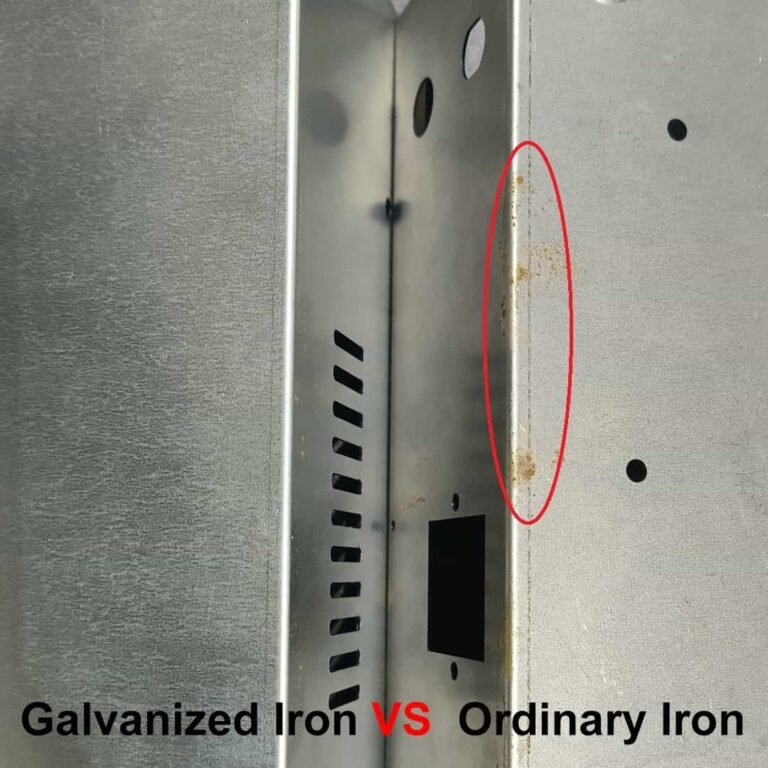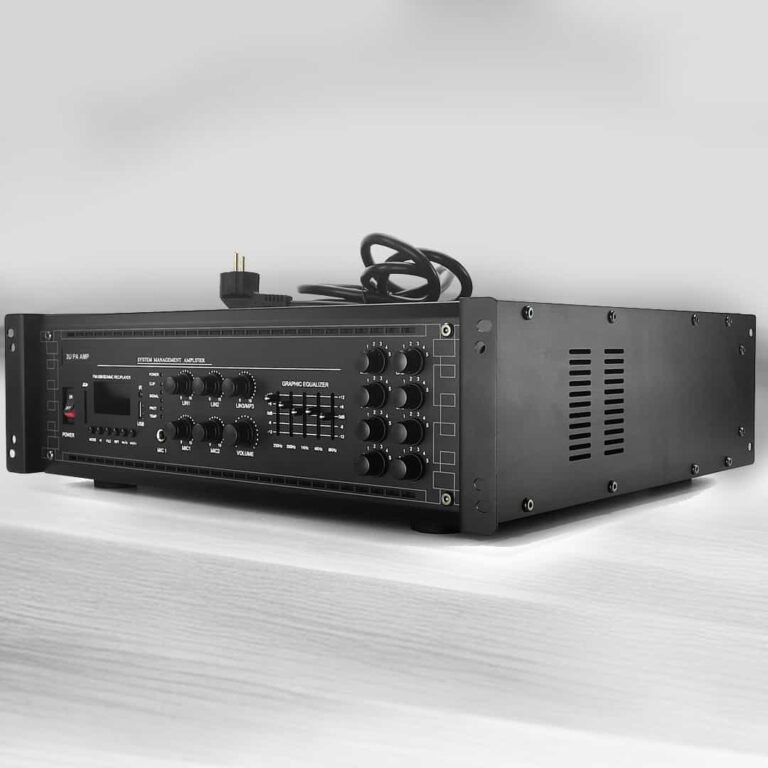Professional power amplifiers play a crucial role in enhancing the audio experience of any sound system. They are responsible for boosting the power of the audio signal from the source and delivering it to the speakers. Therefore, it is essential to ensure that your power amplifier is compatible with your existing audio devices to achieve the best sound quality. In this article, we will discuss some essential factors that can help you determine the compatibility of a power amplifier with your audio devices.
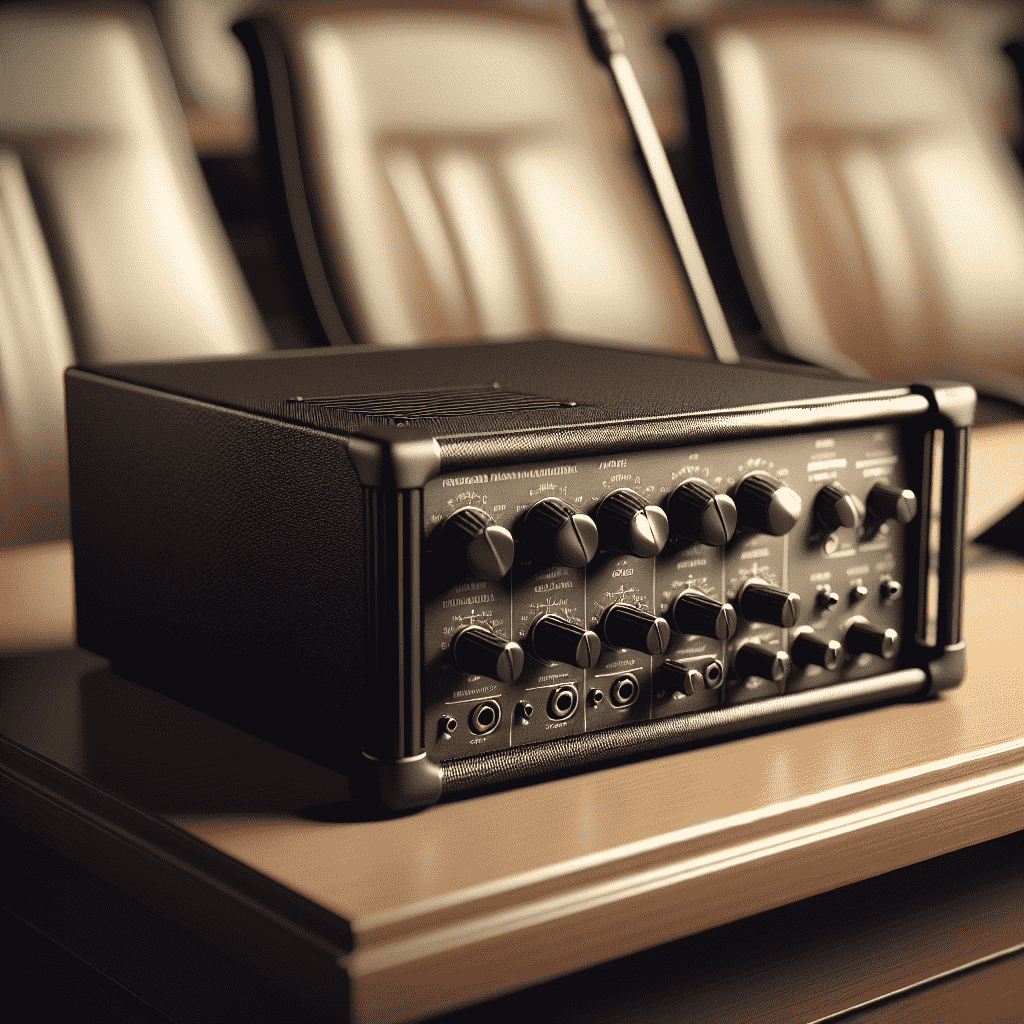
Impedance Matching
Impedance, measured in ohms (Ω), is essentially electrical resistance. In the context of audio equipment, it’s the amount of resistance to power flow that an amplifier can expect to meet when trying to drive a given speaker.
Most home stereo audio amplifiers are designed to handle speakers with an impedance of between 4 – 16 ohms. The speaker impedance is usually written on the back of the speaker or in the speaker’s manual.
If an amplifier with an output impedance of, say, 8 ohms is connected to a speaker with the same nominal impedance of 8 ohms, this is ideal as it enables maximum power transfer. However, it’s still safe to connect an 8-ohm amplifier to 4-ohm or 16-ohm speakers.
Here’s why:
1. Higher-impedance speakers: If the speaker impedance is higher than the amplifier impedance, the speaker will get less power than when the impedance is matched. However, this is a safe combination as it will not overheat or overdrive the amplifier.
2. Lower-impedance speakers: Lower speaker impedance means the amplifier must produce more power. Connecting an 8-ohm amplifier to 4-ohm speakers may cause the amplifier to overheat or shut down as it attempts to deliver more power than it’s designed to handle continuously.
That said, many modern amplifiers are designed to handle lower impedance speakers (4 ohms or even less) without problem. Look for an amplifier that includes specific ratings for different speaker impedances.
Please note: Variation in the speaker’s actual impedance across the frequency spectrum can often cause impedance to dip at certain frequencies. Therefore, even if your audio amplifier can handle the nominal impedance of your speakers, it’s important to ensure it’s also capable of handling these dips in impedance
Output Power
The first and foremost factor to consider is the output power of the power amplifier. It is measured in watts and determines the maximum loudness the amplifier can achieve. You need to check the power rating of your existing audio devices and make sure that the power amplifier you are considering can deliver enough power to match or exceed it. For instance, if your speakers have a power rating of 100 watts, you will need a power amplifier that can deliver at least 100 watts per channel.
Inputs and Outputs
The inputs and outputs of a power amplifier should match the inputs and outputs of your existing audio devices. For example, if your audio devices have RCA inputs, your power amplifier should also have RCA inputs to connect them easily. It is also essential to check the number of inputs and outputs to ensure that you can connect all your audio devices to the power amplifier.
Features and Functions
Both your professional power amplifier and audio system should support the same features. For example, if you want to play vinyl, your amplifier needs a phono input. If you’re using a digital source like a CD player or a streaming device, your amplifier should have digital-to-analog conversion capabilities.
If possible, it’s always a good idea to take your existing devices to the store when purchasing a new pro power amplifier. This way you can ‘try before you buy’ and ensure optimal compatibility and sound quality. For more details about power amplifiers please visit https://vipsounds.com/basic-guide-for-pa-amplifiers-before-purchasing/

